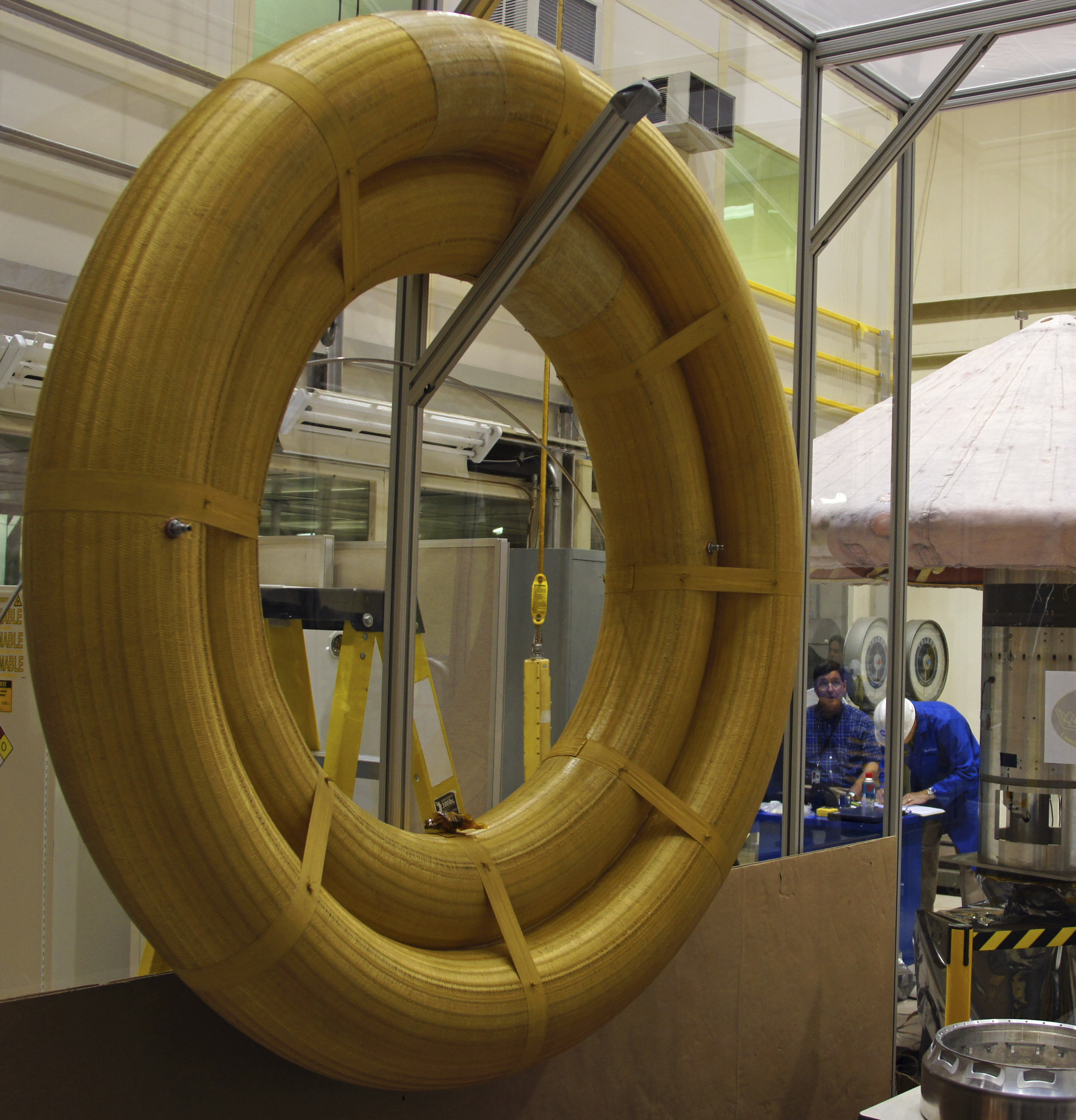
NASA explores inflatable spacecraft technology
Devising a way to one day land astronauts on Mars is a complex problem and NASA scientists think something as simple as a child’s toy design may help solve the problem. Safely landing a large spacecraft on the Red planet is just one of many engineering challenges the agency faces as it eyes an ambitious goal of sending humans into deep space later this century. At NASA’s Langley Research Center in Hampton, engineers have been working to develop an inflatable heat shield that looks a lot like a super-sized version of a stacking ring of doughnuts that infants play with. The engineers believe a lightweight, inflatable heat shield could be deployed to slow the craft to enter a Martian atmosphere much thinner than Earth’s.
This is a technology that I think is ready to use, whether it’s for humans in 20 years on Mars or whether it’s a large robotic mission sooner than that.
Neil Cheatwood, the senior engineer at Langley for advanced entry, descent and landing systems
The inflatable rings would be filled with nitrogen and covered with a thermal blanket. Once deployed for landing, the rings would sit atop the spacecraft, somewhat resembling a giant mushroom. Smaller scale, inflatable experiments have been launched on rockets before, but never into orbit. NASA’s leaders acknowledge that getting humans safely to and from Mars as early as the 2030s will poses extreme challenges. The agency’s scientists acknowledge they also must design new in-space propulsion systems, advanced spacesuits, long-term living habitats aboard spacecraft — even communication systems for deep space.

Science